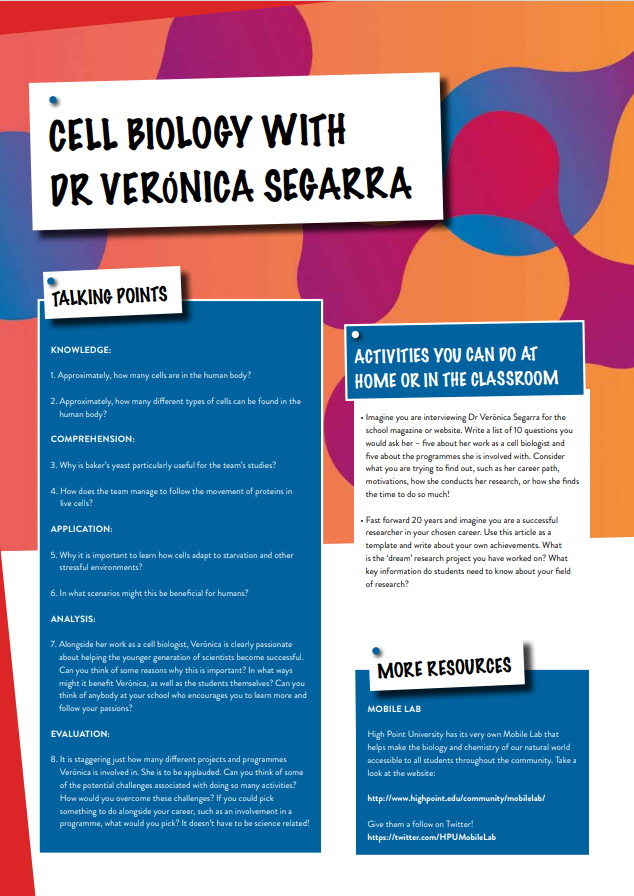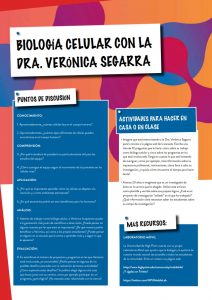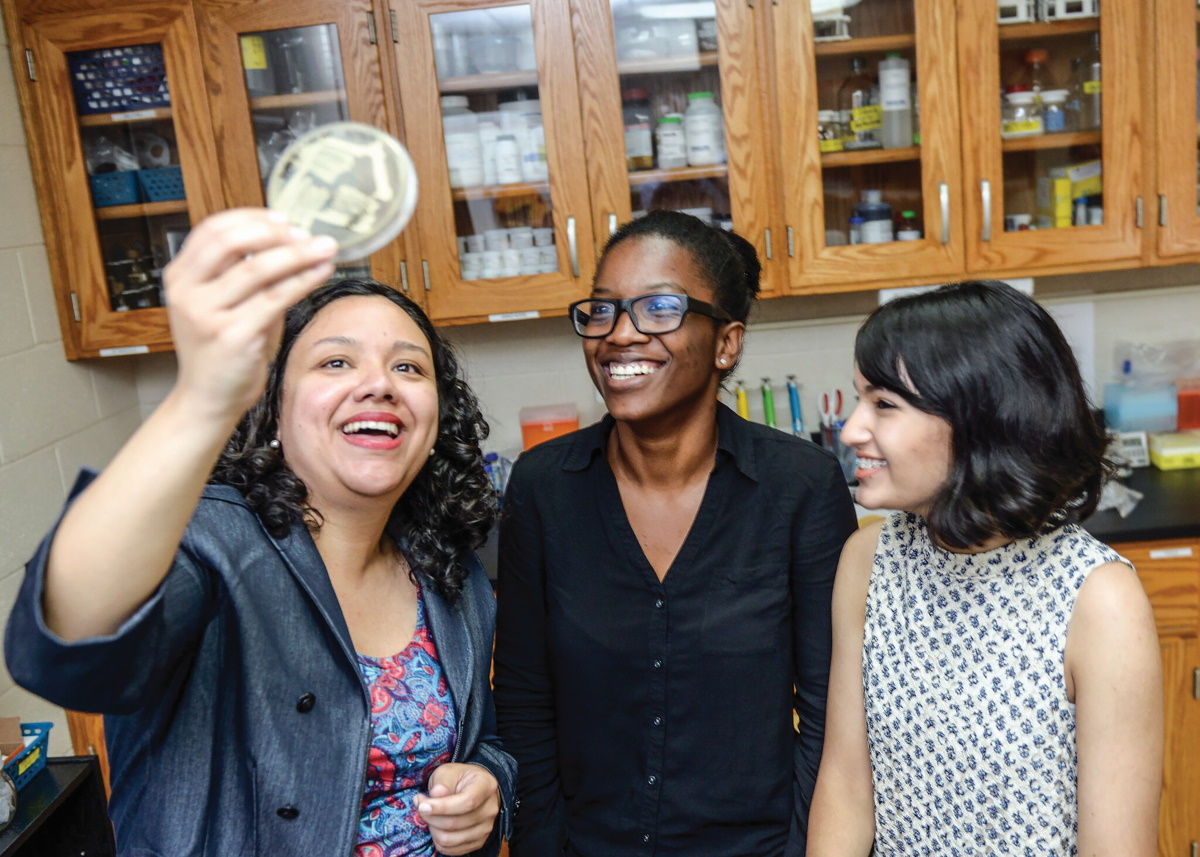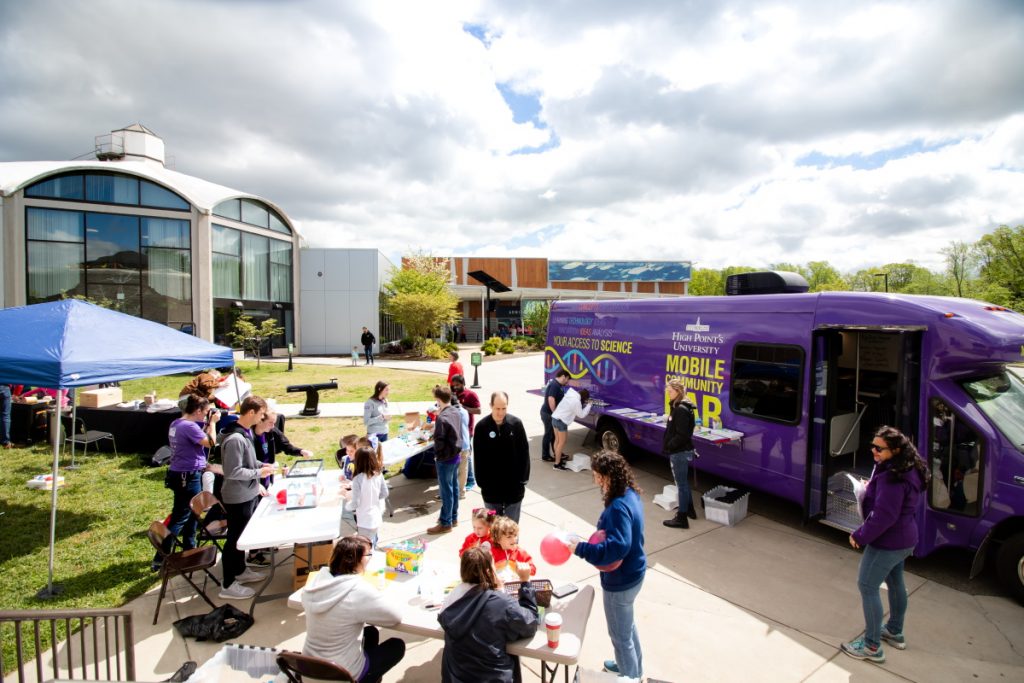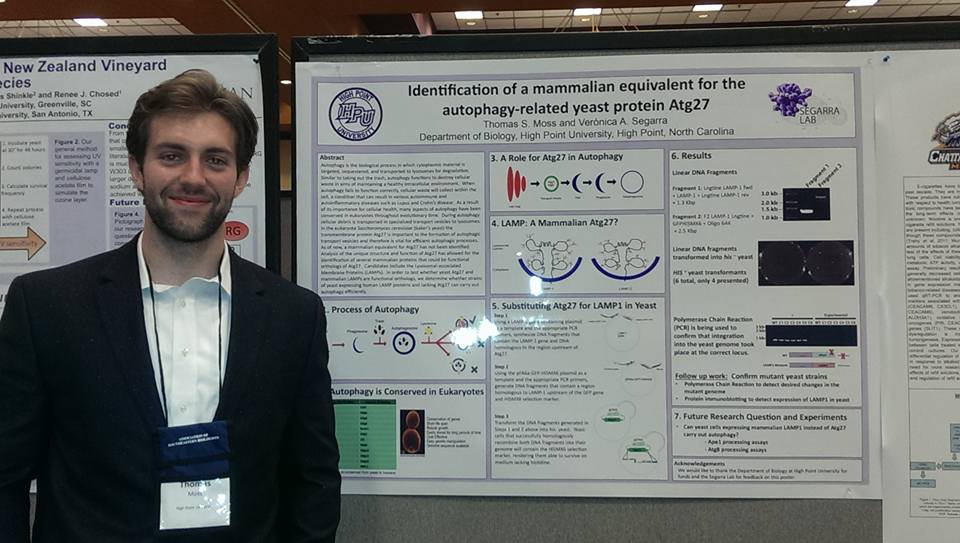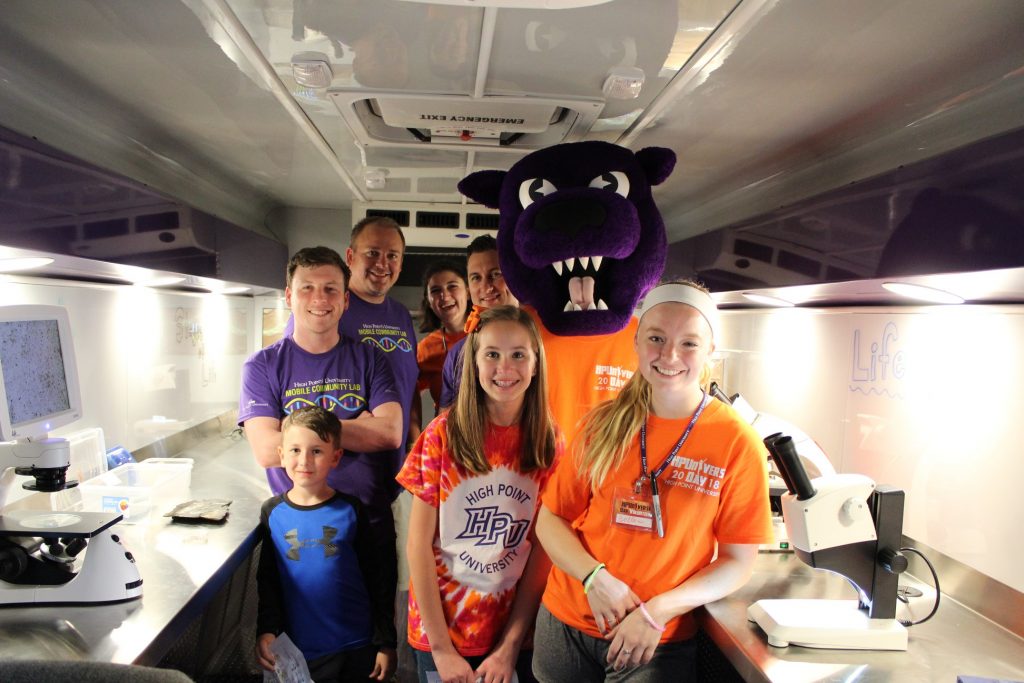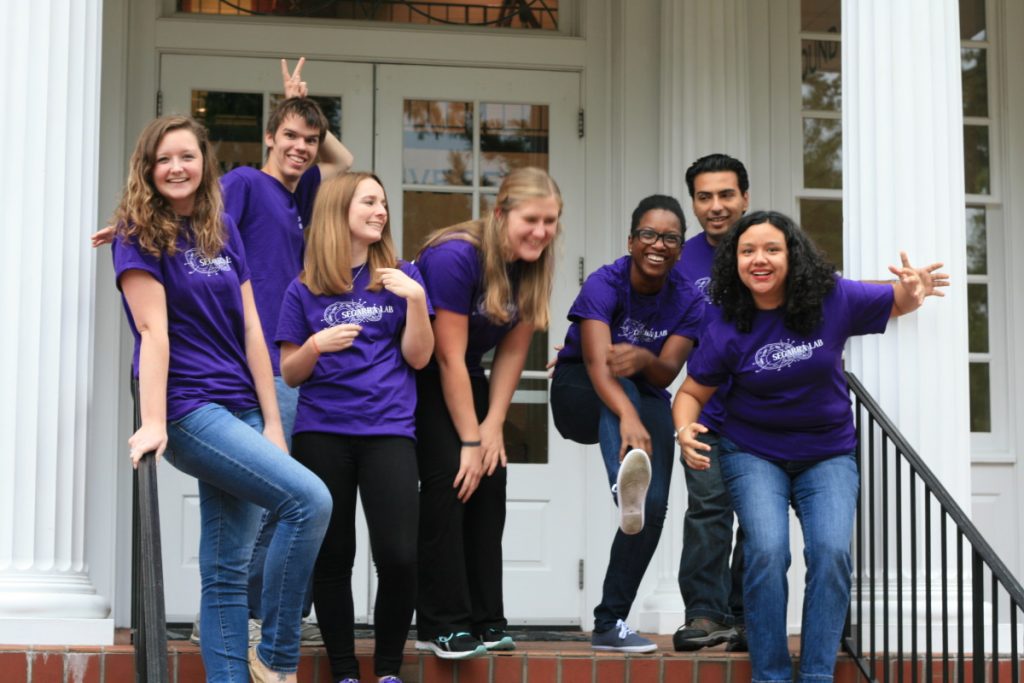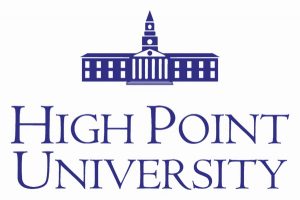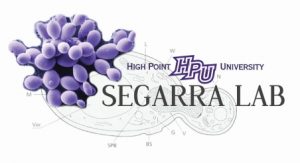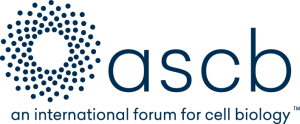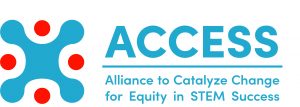Understanding cells and fostering love for science
Cells are the basic unit of life and perform a vast array of functions in the human body, ranging from providing structure and support to facilitating growth, producing energy, and aiding reproduction. Recent estimates put the number of cells in a single human body at around 30 trillion (yes, that means 30,000,000,000,000), with more than 200 types of cells performing different specialised jobs. In spite of this incredible diversity, there are many important traits and abilities that all cells have in common. It is hardly surprising, then, that scientists around the world dedicate their lives to studying more simple, single celled organisms to enhance our understanding of cellular function and how they are able to do the wonderful things they do.
Dr Verónica Segarra is one such scientist. Based at High Point University in North Carolina, USA, Verónica is a cell biologist who seeks to understand more about the membrane trafficking events that enable the cell to adapt to conditions of stress and starvation. Put simply, stressed cells must re-organise their membranes and transport damaged materials between different cellular compartments to recycle them and regenerate valuable resources. This carefully orchestrated movement of materials throughout the cell is known as membrane trafficking, and is especially critical to survival in times of cellular stress, such as starvation.
HOW IS VERÓNICA USING BAKER’S YEAST IN HER STUDIES?
Scientists often study cellular biology using baker’s yeast, since this simple, single-celled organism shares many of the same behaviours found in human cells, but is easy to grow using cheap ingredients. Verónica’s team uses baker’s yeast to study how cells in general respond to stress by engaging in a behaviour called autophagy, or cellular self-eating. This process cleans out damaged organelles and recycles unnecessary cellular components, freeing up resources that are critical to the cell’s survival in times of stress. “We follow how stress triggers cells to mobilise specific autophagy-related proteins and transport them on different journeys throughout the cell,” explains Verónica. “We are able to follow the movement of these proteins in live cells by genetically modifying these cells so that the key proteins will glow with green or red fluorescence.” By using microscopes to follow these movements, the team is able to understand the role of each autophagy-related protein in making the process successful.
WHAT HAVE BEEN SOME OF THE KEY FINDINGS?
Biologists have long known that cells can be divided into compartments such as the nucleus, vacuole and endoplasmic reticulum, each with its own unique function. Each autophagy related protein can be found in multiple different compartments. However, starvation can set them into motion, summoning them to travel to a new compartment, where they work together to activate recycling to facilitate cell survival. Remarkably, the team has discovered that autophagy-related proteins contain small tags that act like molecular mailing addresses, instructing the cell to deliver them to a specific compartment. Much like when somebody sends a letter and the address explains where it needs to go, these proteins contain a signal that helps the cell to place them where they are needed the most. “This finding has shed light on how the ability of a cell to adapt to stress relies upon many different proteins reaching the correct cellular location and then working together for cell survival,” says Verónica. “In this way, we are learning how the placement of each protein within the cell facilitates its function.”
WHAT ARE THE NEXT STEPS FOR THE RESEARCH?
We now know that baker’s yeast and other cells use autophagy to survive starvation. But do they also use autophagy as a strategy to survive many other types of stress? For instance, Verónica’s group has uncovered evidence that yeast cells might use autophagy to survive the stress of freezing temperatures. “While there is some evidence that autophagy contributes to cells surviving this kind of freeze-thaw stress, it has not been directly tested yet. The answer to this question has implications for the baking industry and other biotechnology businesses that might benefit from genetically enhanced strains of baker’s yeast with increased resistance to freezing,” says Verónica. “Also, because baker’s yeast cells are very similar to human cells, this knowledge can provide us with clues about how to better preserve human cellular material for medical research and therapeutic purposes.”
HOW DOES VERÓNICA THINK YOUNG PEOPLE CAN BE ENGAGED IN SCIENCE?
Alongside her work as a cell biologist, Verónica is passionate about helping the next generation of students become interested in science. She and her team have researched new ways to engage students and facilitate their learning in science. “In my experience, students are engaged when they feel that they belong in science, that they are needed and appreciated in their fields of interest. Students feel like they belong when we give them space and the resources to develop their unique talents as scientists,” says Verónica. “Engaging young scientists in individualised ways will provide us with future professionals who approach science from an angle that is innovative and different from everyone else’s. Only then will we be able to realise the full potential of our talents and respond to the current challenges that affect our society today.”
IN WHAT WAYS CAN THE ARTS HELP YOUNG PEOPLE STUDYING STEM SUBJECTS?
The arts and sciences are surprisingly complementary. Making scientific discoveries requires creativity and the ability to think ‘outside the box’. The arts can help students flex those creative muscles and practise finding new and interesting ways to approach problems. This flexible thinking is crucial for scientists trying to find solutions to new challenges, especially when these challenges are unprecedented. It is important that we all recognise that being a ‘scientist’ means so many different things – there are an extraordinary number of careers in STEM, including ones deeply connected with art, such as careers in medical or molecular illustration.
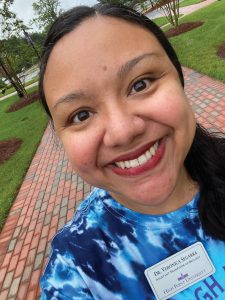 DR VERÓNICA SEGARRA
DR VERÓNICA SEGARRA
Currently: Associate Professor and the Maryland E-Nnovation Endowed Chair in Biological Sciences and Chemistry at Goucher College, a small liberal arts college in Baltimore, Maryland, USA
Previously: Assistant Professor of Biology, High Point University, North Carolina, USA
FIELD OF RESEARCH: Cell Biology
RESEARCH PROJECT: Verónica studies how cells control the movement of molecules inside them. The findings could lead to the development of improved treatments for a range of diseases
FUNDER: National Institutes of Health, National Science Foundation
Verónica’s ACCESS work is supported by the National Science Foundation (NSF) grant number 1744098. Her Accomplishing Career Transitions (ACT) work is supported by an Innovative Programs to Enhance Research Training (IPERT) grant from the National Institute of General Medical Sciences (NIGMS; award number 2R25GM116707).
VERÓNICA’S WORK WITH SCIENTIFIC SOCIETIES
Verónica believes that another way to develop the next generation of scientists is through membership in scientific societies. “Professional societies are communities of scientists that share a particular interest in a field such as microbiology or biophysics. These are organisations that can expose you to cutting-edge research and help you connect with mentors, advisors and future colleagues,” explains Verónica. “They can also help an aspiring scientist acquire strategies to become an independent scientist in a particular field.”
Importantly, these organisations often have a range of ways to engage aspiring scientists and develop their talents in science. There are usually membership levels and programmes that enable students to learn more about a given scientific field and form connections with other members.
Verónica belongs to a number of scientific societies, including the American Society for Cell Biology (ASCB). As a member of ASCB, she has established working relationships with other members who have helped her become a better scientist and take on leadership and mentorship roles in the field.
WHAT IS REWARDING ABOUT VERÓNICA’S WORK WITH THE AMERICAN SOCIETY FOR CELL BIOLOGY (ASCB)?
“Being part of ASCB enables me to stay connected with young scientists that are up and coming in the field and they constantly inspire me,” says Verónica. “Of course, my work also enables me to stay connected with more seasoned scientists in my field who can provide help and guidance when needed.”
As part of her work with ASCB, Verónica is leading its Accomplishing Career Transitions (ACT) programme. The programme enables cell biologists who are starting out their independent careers to customise and individualise their professional development and training through a longitudinal mentoring framework. The ultimate aim is to facilitate their successful transition into the academic STEM workforce. Verónica is keen to emphasise that many of the transferable skills that scientists will need throughout their career are not actually taught through formal training. Thus, Verónica works to design innovative programmes that fill this gap and help young scientists learn these transferrable skills and put them into practice.
WHERE DOES VERÓNICA’S PASSION COME FROM AND WHAT MOTIVATES HER?
“I think the energy and drive to move forward and make progress comes from an overlap between my professional and personal missions and values. For example, helping others speaks to the values with which I was raised and is therefore an important part of my identity,” says Verónica. “My goal of helping others move forward in their quest of becoming successful scientists aligns perfectly with my personal mission – I am strongly motivated to support the next generation the same way I was helped by my teachers and mentors during my time as a student.”
If all that was not enough, Verónica also cofounded The Alliance to Catalyze Change for Equity in STEM Success (ACCESS), which brings together diversity-focused committees from five different scientific societies. When Verónica was the co-chair of the diversity-focused committee of the ASCB (called the Minorities Affairs Committee), she identified a need and looked for ways to collaborate with others to satisfy it.
HOW TO BECOME A CELL BIOLOGIST
• The American Society for Cell Biology is an exhaustive resource that provides a wealth of information on the international community of biologists: https://www.ascb.org/
• National Geographic has a brilliant resource library, which includes an entire section dedicated to cell biology. We cannot recommend this resource enough: https://www.nationalgeographic.org/topics/resource-library-cellbiology/?q=&page=1&per_page=25
• The average salary can range anywhere between $81,150 (microbiologists) and $105,940 (biochemists and biophysicists), depending on the level of experience.
PATHWAY FROM SCHOOL TO CELL BIOLOGY
Verónica believes that biology, chemistry and physics are good subjects for aspiring cell biologists to take while at school. “Aspiring scientists should also take any other courses they enjoy, especially ones that will inspire them to create and formulate creative solutions to challenges we face as a society,” says Verónica. “Problem solving and thinking creatively are transferable skills that can be applied in any field of knowledge.”
You will need a degree in a relevant subject for postgraduate study.
https://study.com/articles/Cellular_Biologist_Education_Requirement_and_Career_Information.html
Reference
https://doi.org/10.33424/FUTURUM99
Dr Verónica Segarra is one such scientist. Based at High Point University in North Carolina, USA, Verónica is a cell biologist who seeks to understand more about the membrane trafficking events that enable the cell to adapt to conditions of stress and starvation. Put simply, stressed cells must re-organise their membranes and transport damaged materials between different cellular compartments to recycle them and regenerate valuable resources. This carefully orchestrated movement of materials throughout the cell is known as membrane trafficking, and is especially critical to survival in times of cellular stress, such as starvation.
HOW IS VERÓNICA USING BAKER’S YEAST IN HER STUDIES?
Scientists often study cellular biology using baker’s yeast, since this simple, single-celled organism shares many of the same behaviours found in human cells, but is easy to grow using cheap ingredients. Verónica’s team uses baker’s yeast to study how cells in general respond to stress by engaging in a behaviour called autophagy, or cellular self-eating. This process cleans out damaged organelles and recycles unnecessary cellular components, freeing up resources that are critical to the cell’s survival in times of stress. “We follow how stress triggers cells to mobilise specific autophagy-related proteins and transport them on different journeys throughout the cell,” explains Verónica. “We are able to follow the movement of these proteins in live cells by genetically modifying these cells so that the key proteins will glow with green or red fluorescence.” By using microscopes to follow these movements, the team is able to understand the role of each autophagy-related protein in making the process successful.
WHAT HAVE BEEN SOME OF THE KEY FINDINGS?
Biologists have long known that cells can be divided into compartments such as the nucleus, vacuole and endoplasmic reticulum, each with its own unique function. Each autophagy related protein can be found in multiple different compartments. However, starvation can set them into motion, summoning them to travel to a new compartment, where they work together to activate recycling to facilitate cell survival. Remarkably, the team has discovered that autophagy-related proteins contain small tags that act like molecular mailing addresses, instructing the cell to deliver them to a specific compartment. Much like when somebody sends a letter and the address explains where it needs to go, these proteins contain a signal that helps the cell to place them where they are needed the most. “This finding has shed light on how the ability of a cell to adapt to stress relies upon many different proteins reaching the correct cellular location and then working together for cell survival,” says Verónica. “In this way, we are learning how the placement of each protein within the cell facilitates its function.”
WHAT ARE THE NEXT STEPS FOR THE RESEARCH?
We now know that baker’s yeast and other cells use autophagy to survive starvation. But do they also use autophagy as a strategy to survive many other types of stress? For instance, Verónica’s group has uncovered evidence that yeast cells might use autophagy to survive the stress of freezing temperatures. “While there is some evidence that autophagy contributes to cells surviving this kind of freeze-thaw stress, it has not been directly tested yet. The answer to this question has implications for the baking industry and other biotechnology businesses that might benefit from genetically enhanced strains of baker’s yeast with increased resistance to freezing,” says Verónica. “Also, because baker’s yeast cells are very similar to human cells, this knowledge can provide us with clues about how to better preserve human cellular material for medical research and therapeutic purposes.”
HOW DOES VERÓNICA THINK YOUNG PEOPLE CAN BE ENGAGED IN SCIENCE?
Alongside her work as a cell biologist, Verónica is passionate about helping the next generation of students become interested in science. She and her team have researched new ways to engage students and facilitate their learning in science. “In my experience, students are engaged when they feel that they belong in science, that they are needed and appreciated in their fields of interest. Students feel like they belong when we give them space and the resources to develop their unique talents as scientists,” says Verónica. “Engaging young scientists in individualised ways will provide us with future professionals who approach science from an angle that is innovative and different from everyone else’s. Only then will we be able to realise the full potential of our talents and respond to the current challenges that affect our society today.”
IN WHAT WAYS CAN THE ARTS HELP YOUNG PEOPLE STUDYING STEM SUBJECTS?
The arts and sciences are surprisingly complementary. Making scientific discoveries requires creativity and the ability to think ‘outside the box’. The arts can help students flex those creative muscles and practise finding new and interesting ways to approach problems. This flexible thinking is crucial for scientists trying to find solutions to new challenges, especially when these challenges are unprecedented. It is important that we all recognise that being a ‘scientist’ means so many different things – there are an extraordinary number of careers in STEM, including ones deeply connected with art, such as careers in medical or molecular illustration.
 DR VERÓNICA SEGARRA
DR VERÓNICA SEGARRA
Currently: Associate Professor and the Maryland E-Nnovation Endowed Chair in Biological Sciences and Chemistry at Goucher College, a small liberal arts college in Baltimore, Maryland, USA
Previously: Assistant Professor of Biology, High Point University, North Carolina, USA
FIELD OF RESEARCH: Cell Biology
RESEARCH PROJECT: Verónica studies how cells control the movement of molecules inside them. The findings could lead to the development of improved treatments for a range of diseases
FUNDER: National Institutes of Health, National Science Foundation
Verónica’s ACCESS work is supported by the National Science Foundation (NSF) grant number 1744098. Her Accomplishing Career Transitions (ACT) work is supported by an Innovative Programs to Enhance Research Training (IPERT) grant from the National Institute of General Medical Sciences (NIGMS; award number 2R25GM116707).
VERÓNICA’S WORK WITH SCIENTIFIC SOCIETIES
Verónica believes that another way to develop the next generation of scientists is through membership in scientific societies. “Professional societies are communities of scientists that share a particular interest in a field such as microbiology or biophysics. These are organisations that can expose you to cutting-edge research and help you connect with mentors, advisors and future colleagues,” explains Verónica. “They can also help an aspiring scientist acquire strategies to become an independent scientist in a particular field.”
Importantly, these organisations often have a range of ways to engage aspiring scientists and develop their talents in science. There are usually membership levels and programmes that enable students to learn more about a given scientific field and form connections with other members.
Verónica belongs to a number of scientific societies, including the American Society for Cell Biology (ASCB). As a member of ASCB, she has established working relationships with other members who have helped her become a better scientist and take on leadership and mentorship roles in the field.
WHAT IS REWARDING ABOUT VERÓNICA’S WORK WITH THE AMERICAN SOCIETY FOR CELL BIOLOGY (ASCB)?
“Being part of ASCB enables me to stay connected with young scientists that are up and coming in the field and they constantly inspire me,” says Verónica. “Of course, my work also enables me to stay connected with more seasoned scientists in my field who can provide help and guidance when needed.”
As part of her work with ASCB, Verónica is leading its Accomplishing Career Transitions (ACT) programme. The programme enables cell biologists who are starting out their independent careers to customise and individualise their professional development and training through a longitudinal mentoring framework. The ultimate aim is to facilitate their successful transition into the academic STEM workforce. Verónica is keen to emphasise that many of the transferable skills that scientists will need throughout their career are not actually taught through formal training. Thus, Verónica works to design innovative programmes that fill this gap and help young scientists learn these transferrable skills and put them into practice.
WHERE DOES VERÓNICA’S PASSION COME FROM AND WHAT MOTIVATES HER?
“I think the energy and drive to move forward and make progress comes from an overlap between my professional and personal missions and values. For example, helping others speaks to the values with which I was raised and is therefore an important part of my identity,” says Verónica. “My goal of helping others move forward in their quest of becoming successful scientists aligns perfectly with my personal mission – I am strongly motivated to support the next generation the same way I was helped by my teachers and mentors during my time as a student.”
If all that was not enough, Verónica also cofounded The Alliance to Catalyze Change for Equity in STEM Success (ACCESS), which brings together diversity-focused committees from five different scientific societies. When Verónica was the co-chair of the diversity-focused committee of the ASCB (called the Minorities Affairs Committee), she identified a need and looked for ways to collaborate with others to satisfy it.
HOW TO BECOME A CELL BIOLOGIST
• The American Society for Cell Biology is an exhaustive resource that provides a wealth of information on the international community of biologists: https://www.ascb.org/
• National Geographic has a brilliant resource library, which includes an entire section dedicated to cell biology. We cannot recommend this resource enough: https://www.nationalgeographic.org/topics/resource-library-cellbiology/?q=&page=1&per_page=25
• The average salary can range anywhere between $81,150 (microbiologists) and $105,940 (biochemists and biophysicists), depending on the level of experience.
PATHWAY FROM SCHOOL TO CELL BIOLOGY
Verónica believes that biology, chemistry and physics are good subjects for aspiring cell biologists to take while at school. “Aspiring scientists should also take any other courses they enjoy, especially ones that will inspire them to create and formulate creative solutions to challenges we face as a society,” says Verónica. “Problem solving and thinking creatively are transferable skills that can be applied in any field of knowledge.”
You will need a degree in a relevant subject for postgraduate study.
https://study.com/articles/Cellular_Biologist_Education_Requirement_and_Career_Information.html
HOW DID VERÓNICA BECOME A CELL BIOLOGIST?
WHAT INTERESTS DID YOU HAVE AS A CHILD?
So many! I loved the arts, including painting and music (I play the clarinet). I also loved reading and writing, as well as playing and exploring!
WHO OR WHAT HAS INSPIRED YOU IN YOUR CAREER?
I had an inspiring science teacher early in school and she made me want to become a scientist. I never doubted I would become one, even when the going got tough – as it often does when you are doing something worthwhile. I have had many mentors along the way who have been a big help, including more experienced scientists, but also peer mentors who have been at a similar stage in their careers.
WHAT CHARACTERISTICS HAVE ENABLED YOU TO BE A SUCCESSFUL SCIENTIST?
I have worked hard through challenges in ways that speak to who I am as a person and my values. I do this despite any fear of failure I might experience. When I make mistakes, I find ways to learn from them and use these lessons to be better in the future.
WHAT HAVE BEEN YOUR PROUDEST CAREER ACHIEVEMENTS SO FAR?
I am proud that I have accomplished my goal of becoming a scientist – looking back and reflecting on my journey makes me super happy. Something that I have come to value even more than my own career trajectory is the accomplishments of my students. I have had the honour of mentoring many undergraduate scientists and have watched each of them create a unique professional trajectory. I am so proud of them!
WHAT AMBITIONS DO YOU STILL HAVE TO ACHIEVE?
My ambitions are to stay relevant and needed in whatever it is that I am doing. I find that my long-term goals tend to change over time, as I adapt and reflect on my life experiences in science and beyond. I find that very exciting – the possibilities are endless in that I can still become whatever it is I want to become. One of my main goals is to stay engaged and creative, building opportunities for myself and others that enable us to connect with science in authentic ways.
VERÓNICA’S TOP TIPS
01 Do science in a way that speaks to who you are as an individual. Try and create a unique niche that speaks to your passions and values!
02 Do some research on professional societies at the start of your career. Becoming part of the community from the outset will stand you in good stead for the future and undoubtedly introduce you to like-minded people who can inspire you to achieve greater things. Fact: failing fast is the best! Then you can regroup and try again.
Write it in the comments box below and Veronica will get back to you. (Remember, researchers are very busy people, so you may have to wait a few days.)



